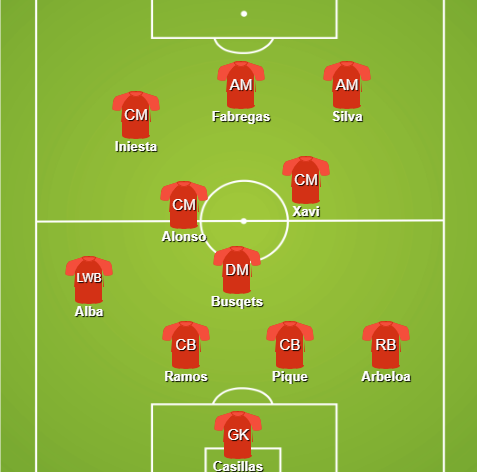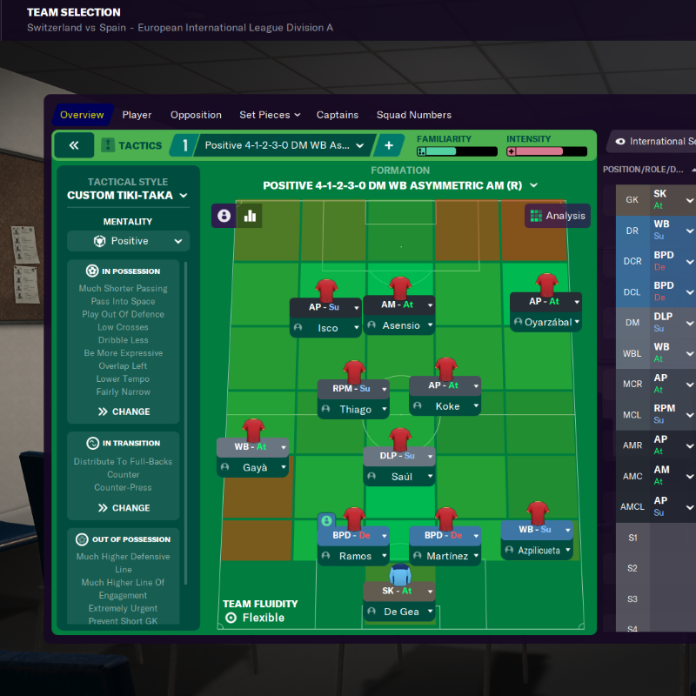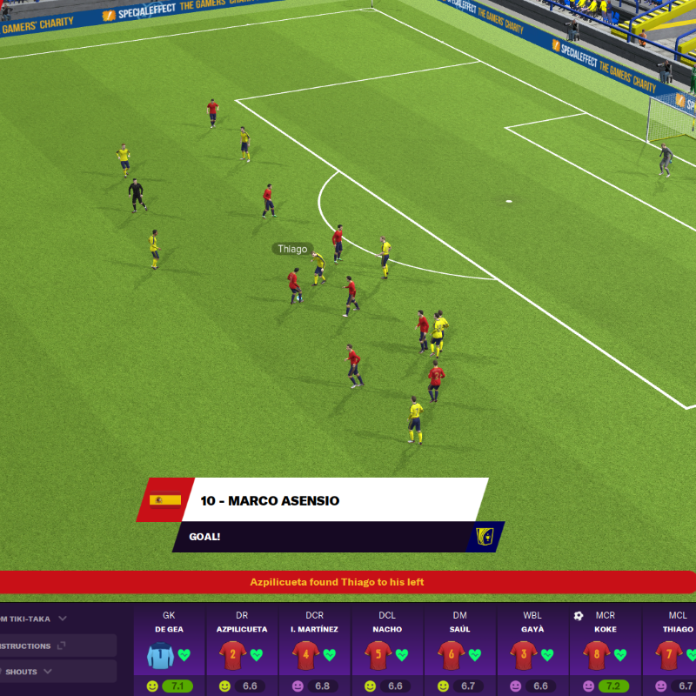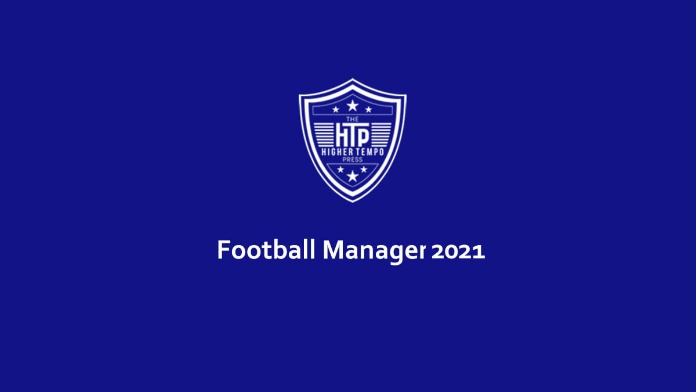Play Like: Del Bosque’s Spain
By
–
December 21, 2020
22
This series takes you through how to evoke the memories of classic teams over the years, recreating their tactics in Football Manager to (hopefully) win games and (definitely) have fun in the process.
Club sides, international teams, league winners, cup winners and just all-round entertainers, the series will focus on the most notable tactical styles which you can then recreate in your FM save. This week we look at one of the biggest proponents of Tiki-Taka football – no, not Pep Guardiola, but his countryman, Vicente Del Bosque, as he oversaw two of Spain’s most spectacular International Tournament wins.
Fresh off the back of Spain’s Euro 2008 win, their first major international trophy, former Real Madrid Champions League winner Vicente Del Bosque was hired to bring the team up to the next level.

The Summer of 2008 also heralded the arrival of another new manager at a top-level job in Spain: Pep Guardiola at Barcelona. Through chance, the greatest ever club team, and one of the greatest ever international teams, began their eras of domination at the same time, in the same country, with largely the same tactics.
The reason this episode focuses on Del Bosque’s Spain is twofold: one, everybody has done a tactical analysis of Guardiola, it happens most weeks on Match of the Day, you don’t need me to tell you what’s what; and two, Del Bosque’s tiki-taka approach was a little different, a more extreme version of the one implemented by Barcelona.
Nobody Expected the Spanish Innovation
Whilst Guardiola won leagues and European Cups with tough pressing, quick passing and a tiny little Argentinian, Del Bosque did not quite have the same players at his disposal. One of the keys to this difference was the versatility of Andres Iniesta – clearly an attacking CM at Barcelona, Iniesta was pushed wider for Spain, forming part of the front three in the 4-3-3, as Busquets, Alonso and Xavi made up the midfield trio.
This meant 4 centre midfielders were present on the pitch at one time – all of them technical masters, a recipe for pure passing mayhem.
The approach was functional in 2010, it had to be to win the World Cup. Hard pressing and quick passing was clearly the Spanish signature style, but not quite as extreme as what the team rustled up in 2012 (the much more interesting tactical setup in my view).
At the World Cup, the team still played with a recognised striker (usually in the form of David Villa, occasionally Fernando Torres) and a winger (Pedro or Jesus Navas). But at Euro 2012, Del Bosque gave opponents nightmares, by utilising Cesc Fabregas in the central “striker” position, and CAM David Silva on the wing, opposite Iniesta.
Midfield Domination
This led to the below formation:

6 midfielders. All of them playmakers. In front of one of the most technically gifted back four’s in history. This is why Spain completed 510 passes in the Euro 2012 Final against Italy. This is why the Italians just couldn’t keep up with them, even with a star-studded diamond midfield. Italy thought they’d packed out the middle of the park with 4, Spain went two better.
Spain won 4-0, completing 11 passes every minute whilst in possession, or a pass every 5 seconds. What Italy couldn’t deal with was the relentless movement of the ball when Spain had it, and the relentless pressing of the ball when Italy had it – all made possible with a 6-man midfield. Add into the mix the young Jordi Alba flying down the left wing at every opportunity, and the opposition couldn’t keep up.
With Silva and Iniesta coming inside into the half spaces, plus Cesc Fabregas playing as a CAM (yet still the furthest player forwards), the Spain players could consistently outnumber their opposition.
8 years on, how can you set your team up to replicate this unstoppable midfield domination?
Play Like Del Bosque
The current Spain team actually has many of the same players still in circulation, most notably Alba, Pique, Ramos, Busquets and Silva plying their trade in La Liga. But this tactical style is as much focussed on technique as it is on energy and stamina, something which these ageing players are distinctly lacking (you hear me Ronald Koeman?).
In terms of tactics, the standard tiki-taka setup will provide the right style of play, the only thing to add would be to overlap the left back, as much of the attacking speed will be provided there. Clearly then, this left back needs to be someone for which pace and energy isn’t a problem.
I have gone with Jose Gaya, his pace, acceleration and technical attributes put him right up alongside 2012 Jordi Alba, which gives him the capability to win games. On the right side needs to be a more conservative full back; still with quality going forward, but more suited to a defensive role. I have gone for Cesar Azpilicueta, certainly more defensive minded and therefore willing to stay back whilst Gaya zooms forward on the left.

In the centre, Ramos is the only surviving member of the glory years, and I have gone for Inigo Martinez alongside him – similar play style to Pique but a few years his junior. These will both be shielding De Gea, with the natural shot stopping ability of Casillas.
Now, onto the 6-man midfield. In the deep-lying Busquets role, Saul. Like Busquets, a converted attacking midfielder, Saul has the blend of defensive discipline and attacking flair to keep the middle of the pitch moving. Ahead of him, I have Thiago in the Xabi Alonso role, and Koke in the Xavi slot. Koke has been likened to Xavi for years, and has that same eye for a forward pass. As does Thiago, but his range of passing is perhaps stronger, which is more in tune with Alonso.
Ahead of them, Real Sociedad’s Mikel Oyarzabal fills the inverted David Silva position, his all-round technique and left foot making him a clear choice. Isco takes up the Iniesta mantle – both players primarily known for their close control and dribbling skill, less so for their pace. And in the Fabregas position, still in midfield but pushing forward, is Marco Asensio. His whole game is to attack from just behind the striker – now he can do the same role just without the striker.
Overload the Opposition
As the below image shows, by packing out the midfield, the opposition just cannot get near the ball. Even with 8 men back, Sweden are unable to get close with so many Spanish bodies in the way. Eventually the ball falls to Thiago, who then has the simple task (with the Swedish defence now drawn out of position) of pushing it through to Asensio to score.

What is most interesting about this attack is that there are 16 players within a 10-yard area – and then all within the width of the 18-yard box. Without natural wingers or a striker, the defence has no reason to drop into their own box – this then leaves space for any of the attacking trio to exploit that space, as we do here to go 2-0 up.
My favourite stat that sums up this match is this: Sweden completed 85% of their 343 passes. Spain completed 89% of their 511 PASSES. 11 passes a minute, or one every 5 seconds – the exact same as Spain produced in that 2012 final against Italy. By outpassing the opposition you outmanoeuvre the opposition, creating space to score the goals you need, and win big.
This is the essence of what Del Bosque tried (and succeeded) to achieve with Spain – such pure domination that the win had to come naturally. While it didn’t always work out with a scoreline as resounding as 4-0, when it did come off, it was legendary.
SHARE
Previous articleKnow Your Role: Ball Playing Defender
Budding sports writer, slight obsession with data, major obsession with Football Manager, hoping to combine them one step at a time.
